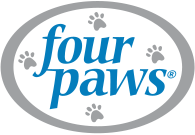How Often Should You Wash Your Dog?
When you’re determining how often to wash your dog, the answer can depend on a wide variety of factors. In general, dogs who lead more of an outdoor lifestyle might require multiple baths per week, while smaller, indoor dogs will need less frequent washing.
No matter how frequently your furry friend requires a bath, bathing at home is an essential part of at-home dog grooming. In fact, the entire grooming process is critical to your dog’s overall health and happiness. Comprehensive dog grooming addresses your pet’s coat, paws, oral hygiene, and other factors that influence their overall wellness.
Done correctly, bath time can be one of your dog’s favorite activities. If you can make the washing process fun when bathing your puppy, your dog will learn to appreciate baths and water from a young age.
It’s important to establish, and stick to, a bath time frequency that works for your dog. If you bathe your pooch too frequently, you can compromise their hair quality, upset the skin, and increase their risk for various infections. Conversely, dogs who aren’t bathed enough can develop a dry coat, irritated skin, and even fleas.
When you’re deciding how often to wash your dog, not all factors are created equal. In particular, consider your dog’s coat, lifestyle, and health—as well as your health—while creating a bath schedule that works for your pet.
Your Dog’s Coat
Your dog’s coat might be the single most influential factor when it comes to determining their bath schedule. Your pup’s fur will directly influence their hygiene needs, depending on the coat’s color, thickness, and length.
Your dog’s coat type will largely affect their bath schedule. Furry friends with smooth or short-hair coats typically don’t require baths as often as dogs with hair that reaches the floor. Dogs with longer hair will also experience issues with mats and tangles, which can become painful if left unaddressed. In addition to managing your dog’s bathing schedule, dedicate just a few minutes each day to removing your dog’s tangles and matted hair before they damage their undercoat and skin.
Any time you notice dirt or other stains on your dog’s coat, it’s a good indication that it might be time for a bath. If your pet has a light-colored coat, removing stains from dog fur is an important process. Use brushes, shampoos, stain removers, and wipes that accommodate your dog’s skin and coat length.
Your Dog’s Lifestyle
Your furry friend’s lifestyle can help determine their bathing schedule. Dogs with more active outdoor or social routines might require a little extra attention in the tub to remove any dirt, leaves, burs, or matted hair that may have collected.
Your dog’s playtime is an important part of their schedule. Regular play and exercise allow your pet to socialize, build skills, enjoy toys, and safely explore the great outdoors. However, experienced pet parents know playtime can also increase a four-legged friend’s need for a thorough post-playtime bath. Be sure to inspect your dog’s coat, paws, and limbs after playtime to see if they need a quick cleaning.
Exercise can increase your pet’s need for a bath, no matter where that exercise takes place. If you regularly play with and train your dog indoors, adopt the same post-activity inspection to gauge their need for at least a quick rinse. Exercising your dog indoors is a great way to avoid mud and parasites, but you might still occasionally need to bathe your furry friend after playtime has concluded.
Your Dog’s Health
You’ll also want to consider your dog’s overall health when establishing a bath time routine, even if you don’t see visible signs that they need to be cleaned. Conditions like sensitive skin, allergies, and bacterial skin infection may increase a dog’s need for regular baths or increase their need for special shampoos or conditioners.
Your pooch might develop sensitive skin from a flea bite, diet change, exposure to dust, or a variety of other factors. A bath can help soothe and heal your dog’s sensitive skin, as long as you use the right products and approach. Cut away extra hair from the affected skin and bathe your pet with a bathing glove or brush to promote circulation and remove dead skin.
Because dogs have more delicate skin than humans do, it’s important to use products specifically made for them. Use an oatmeal-based shampoo—or other canine-specific cleaning agents—when bathing your dog, one that cleans deeply without further upsetting their skin.
Many pups have allergies, which can further affect their optimal bathing frequency. To minimize skin irritation, use lukewarm water and a hypo-allergenic dog shampoo. Before rinsing, use a hypo-allergenic dog conditioner to further address your dog’s sensitive skin.
Your Own Health
You also need to consider your own health and comfort level when developing your four-legged friend’s bathing schedule. If you’re allergic to dirt, pollen, or other irritants, you may need to bathe your dog more frequently to remove these items from their coat.
Household rules might also affect how often you need to clean your dog. For example, some families allow their furry friends onto furniture such as couches and beds. If you do allow your dog onto the household furniture, bathing and brushing can remove much of the debris they would otherwise carry with them onto the couch.
If you’re not comfortable with your dog spending time on the bed alongside you, there are several ways to keep your dog off of the furniture. If you’re looking to establish these boundaries in your home, here are a few suggestions:
- Provide your dog a comfortable bed potentially located near your own and encourage them with treats to explore their new space.
- Dedicate one piece of old furniture specifically to your dog, perhaps one you’ve used in the past that they are now allowed to climb.
- Use verbal commands like “Off!” or “Up!” and reserve these cues only for furniture-specific situations.
- Apply indoor- or outdoor-specific repellant spray to proactively prevent your dog from climbing on forbidden objects.
Avoid raising your voice or spraying your pet with water when training them. Instead, reward your dog with treats or other incentives when they obey your request to stay off of the furniture.










